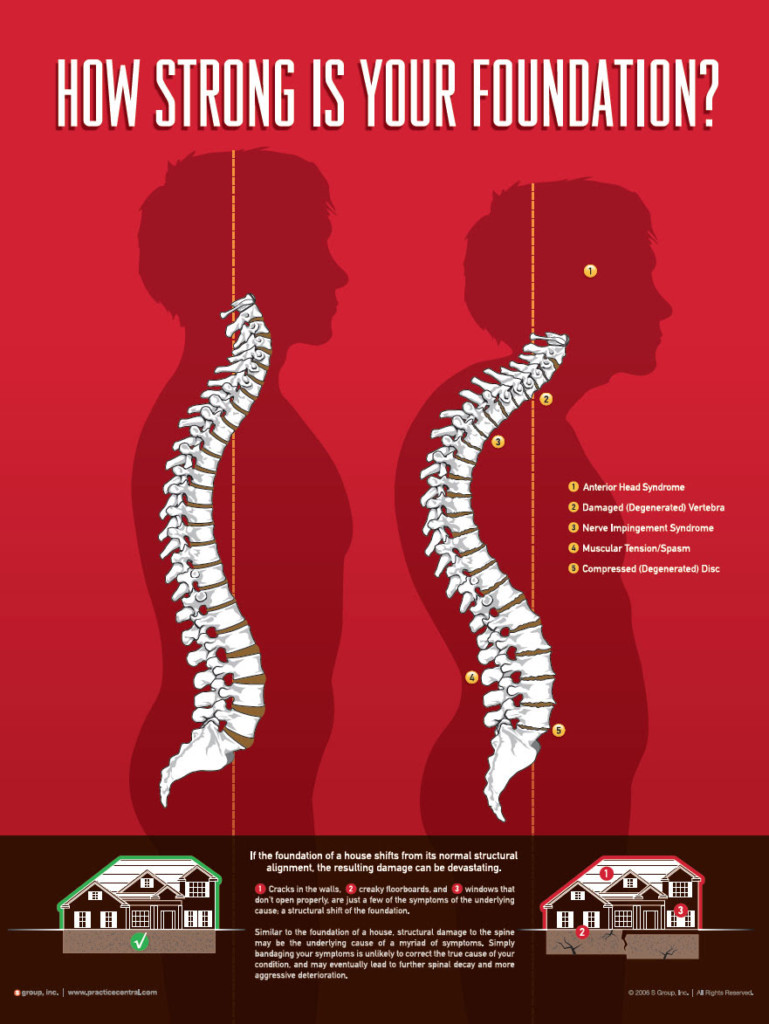After each of the snow storms this winter it is inevitable that I get that call from a patient saying their low back or neck pain flared up again. This is often due to shoveling in addition to sore and tight muscles that are used to help keep you balanced on the snow and ice.
Although these aches and pains tend to ‘go away’ after a few days, the structural shift that caused the symptoms will persist and continue to flare up unless something is done to correct the root cause. Now most chiropractors, physical therapist, and massage therapist focus on relieving your symptoms. You can go to any one of these professionals and there is no doubt you will feel better (in fact I often recommend these services to patients in addition to their care). However, if your condition is related to a structural shift of the spine, then you may require someone who focuses on the area of chiropractic that is called Structural Correction.

Think of it like this: If a house is not resting correctly on its foundation, then what you have is known as a structural abnormality. Could the foundation issue result in a series of problems? Could that shift of the foundation cause the walls to crack.. floors to creak… the windows to get stuck, etc? Should we fill in the cracks, put another nail in the floor, and put some WD-40 on the windows or should we FIRST check the foundation and the frame of the house and correct any issues that may exist? Most chiropractors focus on the symptoms (secondary conditions). Again, there is nothing wrong with that. From their perspective, when the symptoms have been addressed, the condition is no longer an issue. Meanwhile, what do you think will happen to the walls, the floor, and the window if we don’t focus our attention on the foundation, the underlying cause?
If you have or are experiencing any discomfort, you may very likely have a structural condition in your spine that is causing these symptoms. I encourage you not to wait to see if it will ‘get better on its own’. Often these shift will continue to build, perhaps silently, until the symptoms becoming too big to ignore.
